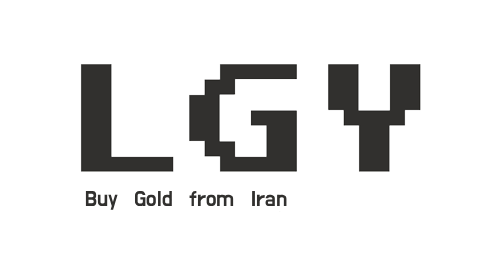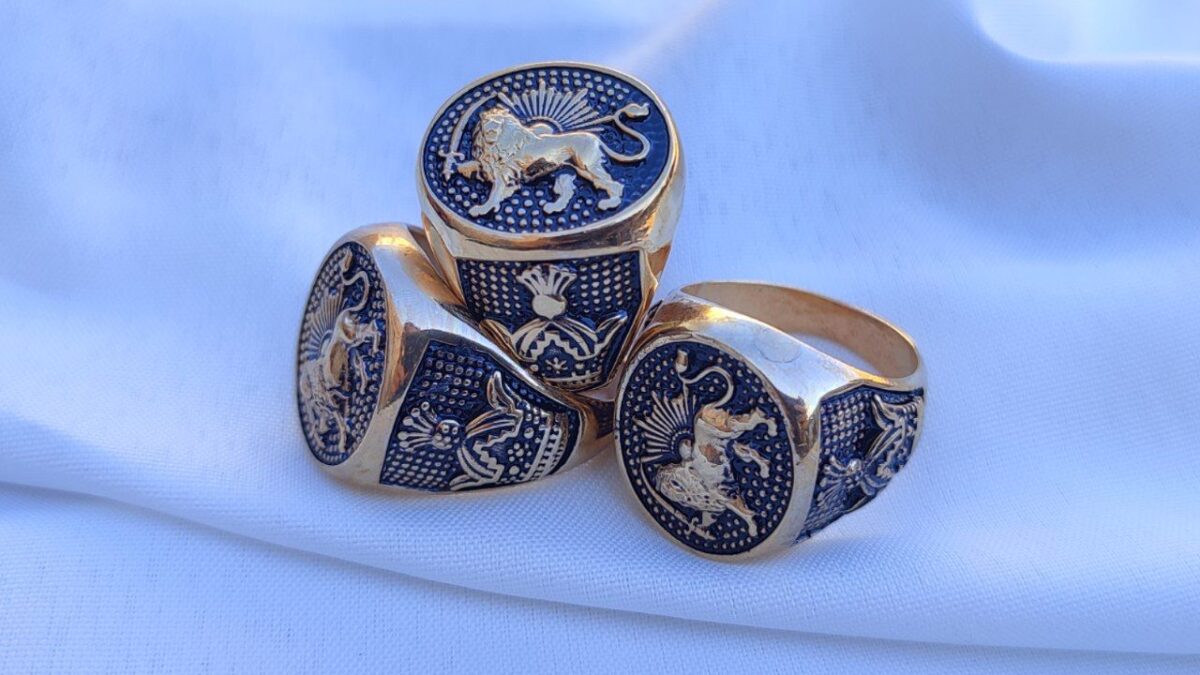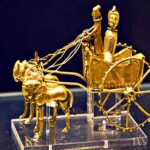
The History of Jewelry in Iran: A Journey Through Time
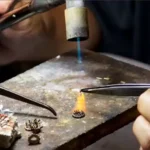
Traditional Techniques of Jewelry Making in Iran
Iranian jewelry has long been admired for its intricate designs and rich symbolism. Over centuries, artisans in Iran have skillfully incorporated various historical, cultural, and spiritual symbols into their creations. These symbols not only enhance the beauty of the pieces but also carry profound meanings, connecting the wearer to Iran’s ancient traditions and beliefs. In this post, we explore some of the most prominent symbols used in traditional Iranian jewelry and uncover their deeper meanings.
1. The Lion and Sun (Shir o Khorshid)
One of the most iconic symbols in Iranian culture is the Lion and Sun, which has been used in Iranian art, including jewelry, for centuries. This symbol, particularly prominent during the Safavid and Qajar dynasties, represents strength, power, and divinity.
- The Lion: In Iranian tradition, the lion is often associated with royalty, courage, and guardianship. It is a symbol of both the warrior spirit and the protector of the realm.
- The Sun: The sun represents light, wisdom, and life. It is connected to ancient Zoroastrian beliefs, where it symbolizes the force of creation and the cycle of life.
Together, the Lion and Sun symbolize the unity of strength and enlightenment, reflecting the duality of power and wisdom in Iranian culture.
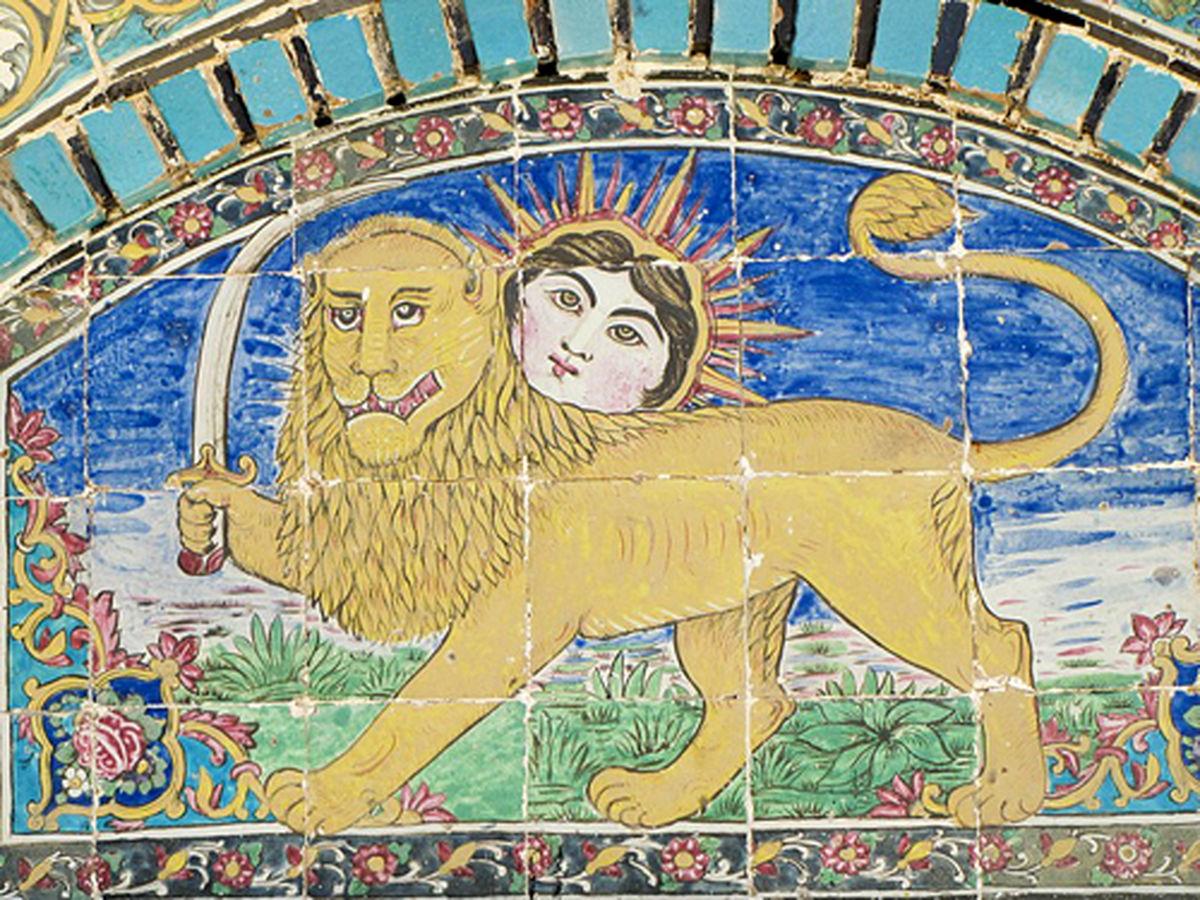
The Lion and Sun (Shir o Khorshid)
2. The Faravahar: Zoroastrian Symbol of Divine Guidance
The Faravahar is one of the most ancient and recognizable symbols of Zoroastrianism, the pre-Islamic religion of Persia. It represents the human soul and divine guidance. This symbol is often seen in traditional jewelry, worn as a protective amulet or spiritual token.
- The Winged Figure: The central figure with outstretched wings represents the eternal human spirit. The three layers of feathers in the wings symbolize the Zoroastrian philosophy of Good Thoughts, Good Words, and Good Deeds.
- The Circle: The ring held by the figure symbolizes the cycle of life and eternity. It is a reminder of the eternal nature of the soul and the connection between the physical and spiritual worlds.
Wearing the Faravahar symbolizes protection, guidance, and the wearer’s connection to the ancient wisdom of Zoroastrian teachings.
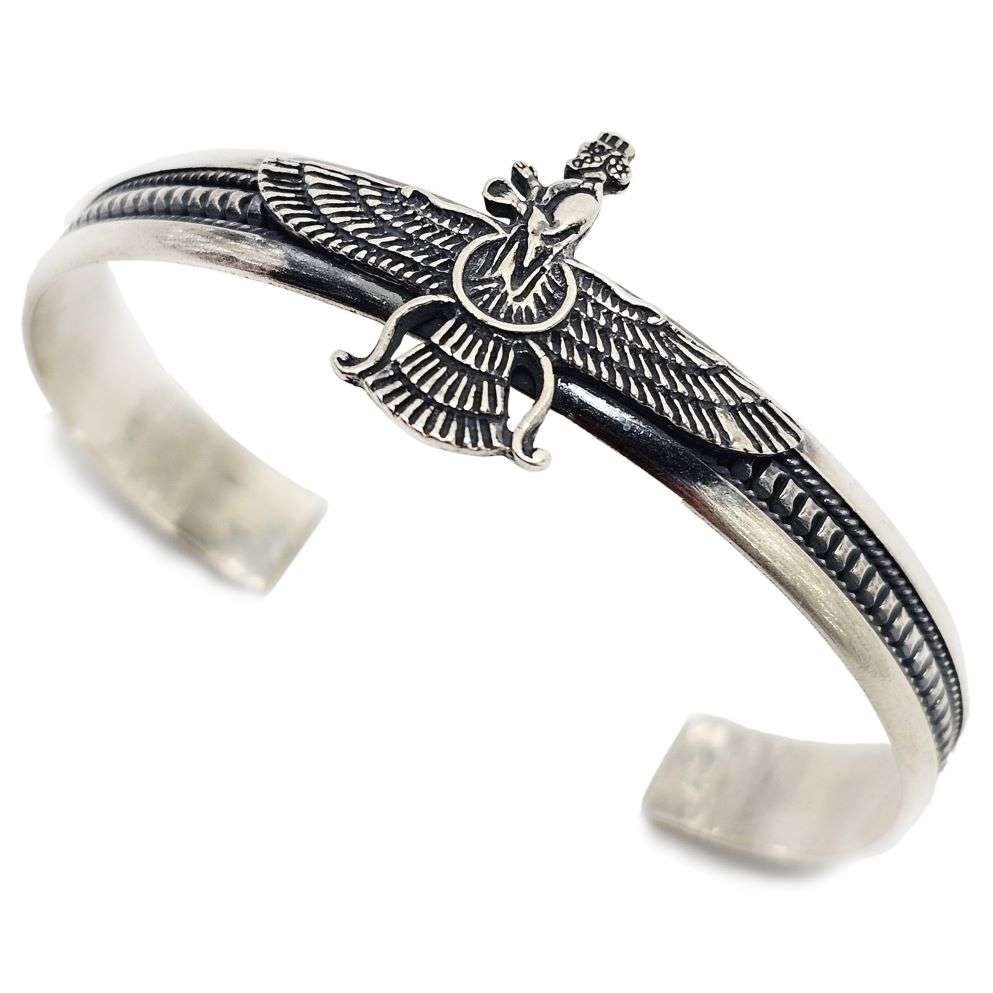
The Faravahar Zoroastrian Symbol of Divine Guidance
3. The Cypress Tree (Sarv): Immortality and Resistance
The cypress tree is another potent symbol in Persian culture, often appearing in both art and jewelry. In Zoroastrianism, it represents immortality and eternal life due to its evergreen nature. It is also seen as a symbol of resistance and resilience.
In jewelry, the cypress motif can be found in necklaces, pendants, and bracelets, often crafted from gold or silver. It conveys a message of enduring strength and eternal beauty, making it a favored symbol in both ancient and modern Iranian pieces.
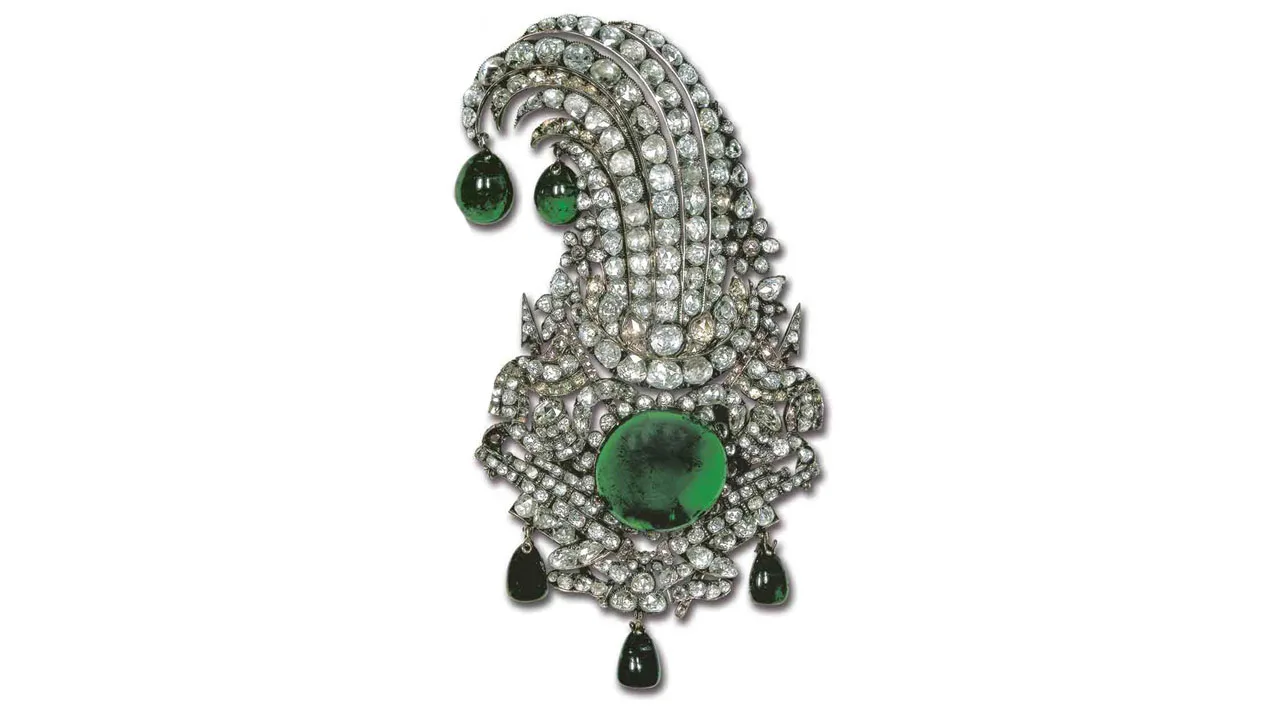
Jaqe Naderi – Iran Treasury of National Jewels
4. Turquoise: The Stone of Protection and Good Fortune
Though not a symbol in the strictest sense, turquoise (Firouzeh) holds deep significance in Iranian jewelry. This beautiful blue stone found abundantly in Neyshabur, has been used for millennia in Iranian ornaments and is often believed to carry spiritual powers.
- Protection: Turquoise has long been considered a protective stone, shielding the wearer from harm and misfortune. In ancient Iran, it was believed that the stone could guard against the evil eye.
- Good Fortune: Turquoise is also associated with prosperity and success. It is commonly worn in jewelry to attract good luck and positive energy.
Iranian artisans often use turquoise in rings, necklaces, and bracelets, embedding the stone in intricate settings to create both beautiful and meaningful pieces.
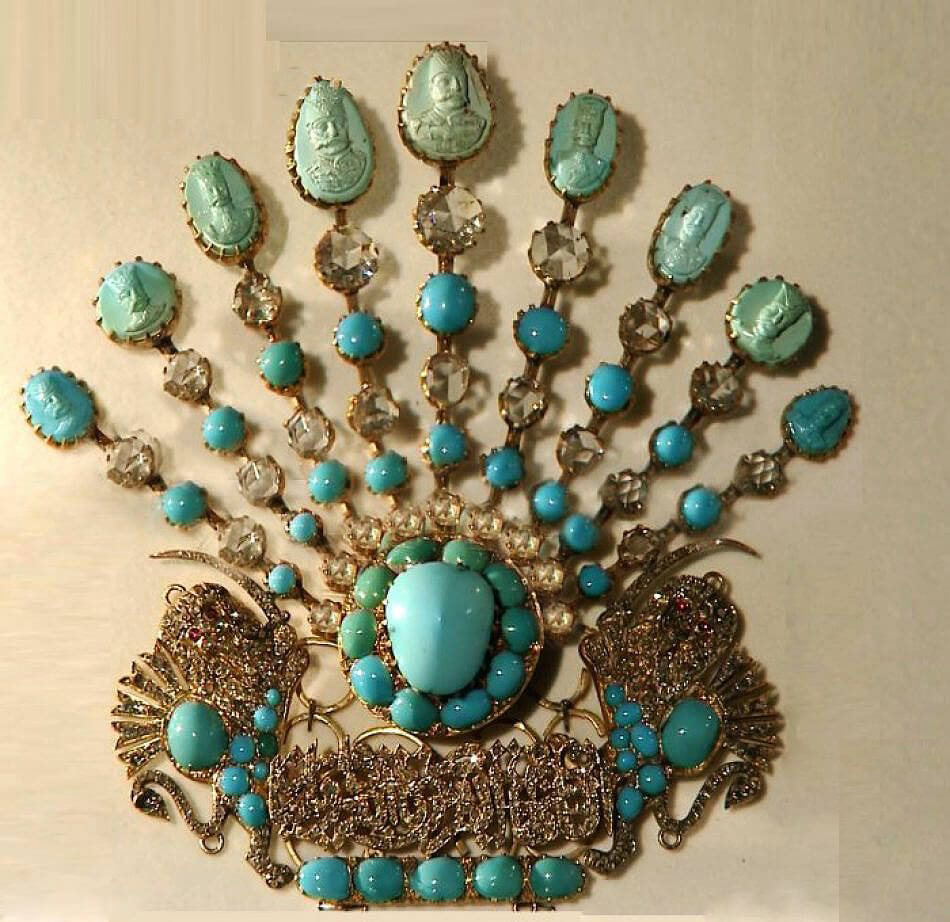
Turquoise – Iran Treasury of National Jewels
5. Pomegranate (Anar): Fertility and Abundance
The pomegranate is a symbol of fertility, abundance, and rebirth in Persian culture. It has been a part of Iranian art and jewelry since ancient times, and its importance can be traced back to Zoroastrianism and even earlier beliefs.
- Fertility: The pomegranate’s numerous seeds make it a natural symbol of fertility and the continuation of life.
- Abundance and Prosperity: In many cultures, including Iran, the pomegranate represents wealth, success, and abundance due to its rich, jewel-like seeds.
In jewelry, pomegranate motifs often appear in pendants, earrings, and bracelets, crafted in vibrant colors to symbolize joy, life, and prosperity.
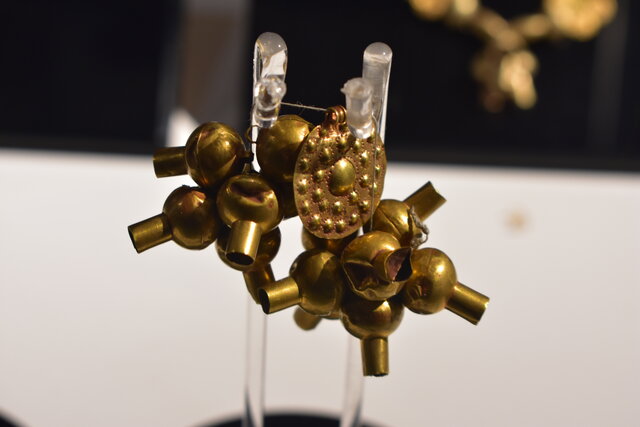
Marlik Treasure Pomegranates
6. Birds: Freedom and Spirituality
Birds have long been a symbol of freedom, spirituality, and the soul’s journey in Iranian culture. In traditional Persian literature, particularly the works of poets like Attar and Hafez, birds often symbolize the human soul’s desire to unite with the divine.
- Simurgh: The Simurgh, a mythical bird in Persian mythology, symbolizes wisdom, healing, and protection. It is often depicted in jewelry as a majestic, phoenix-like figure, representing the triumph of light over darkness.
- Doves and Nightingales: These birds symbolize love, peace, and spiritual transcendence. Jewelry featuring bird motifs often carries meanings of hope, spiritual elevation, and the pursuit of love.
Bird designs in jewelry can range from simple representations to elaborate, artistic renderings, often made in gold or silver and inlaid with precious stones.
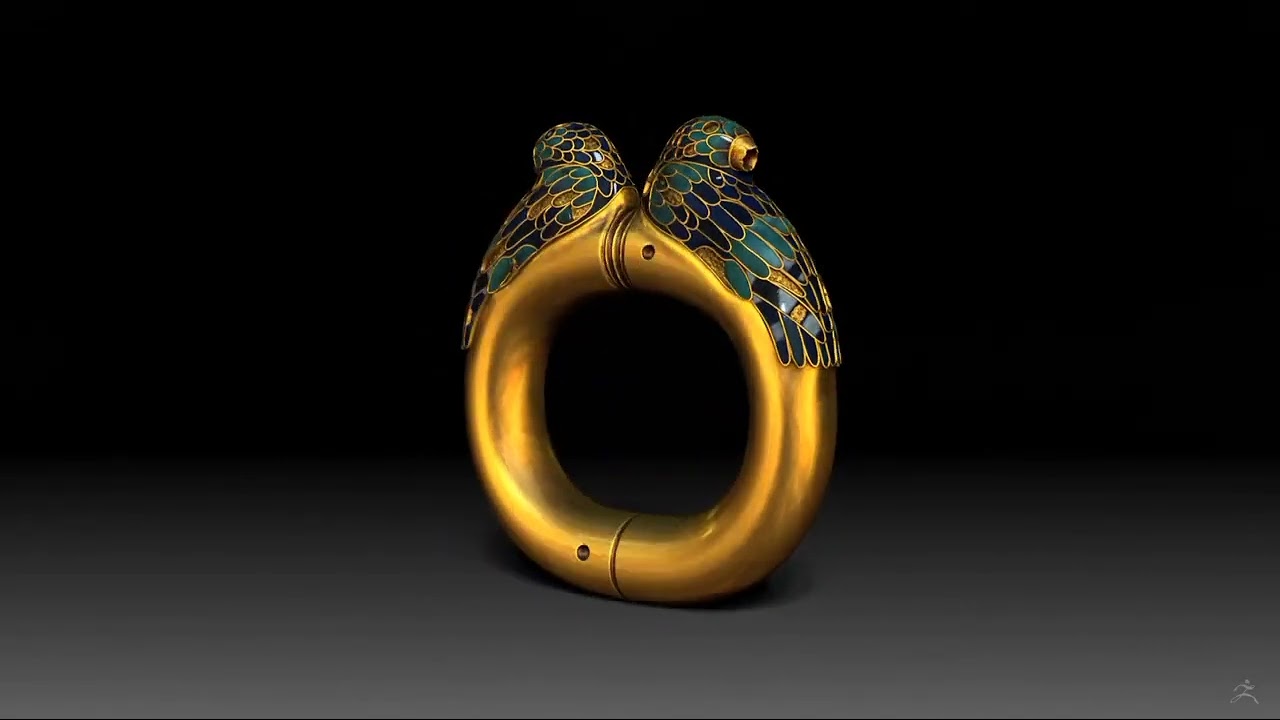
Achaemenid gold bracelet – 5th-6th AD Miho Museum, Japan
7. Agate (Aqeeq): Strength and Courage
Like turquoise, agate is a stone with deep spiritual significance in Iran. It has been used in Iranian jewelry for centuries, valued for its protective and healing properties.
- Strength and Courage: Agate is believed to provide physical and spiritual strength, helping the wearer overcome challenges and fears.
- Healing: It is also thought to have healing properties, particularly in promoting emotional balance and peace.
Agate is often used in rings, bracelets, and amulets, providing both aesthetic beauty and spiritual protection.
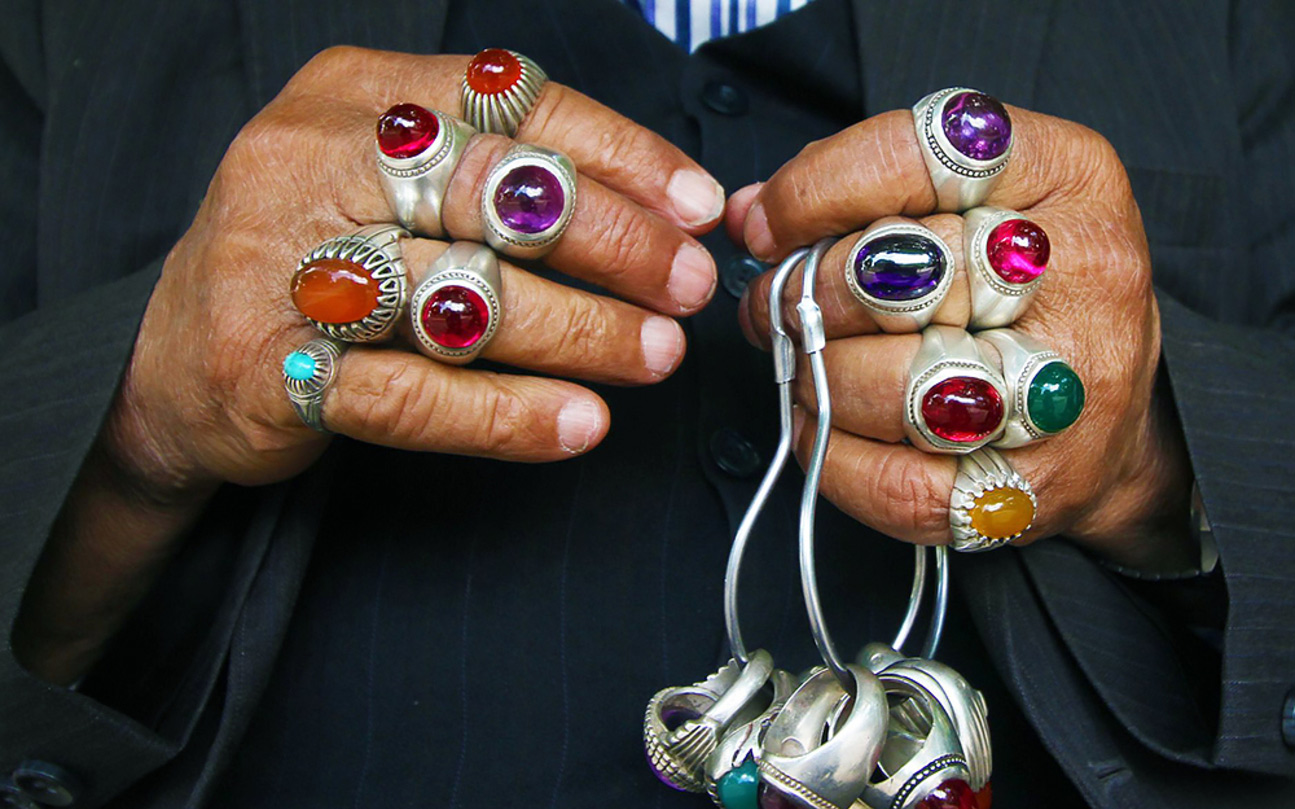
Agate (Aqeeq)
8. The Lotus Flower: Purity and Rebirth
The lotus flower is a universal symbol of purity and spiritual rebirth, and it holds a special place in Iranian art and jewelry. In Persian culture, the lotus is often associated with the concept of inner beauty, spiritual awakening, and the cycle of life.
In traditional Iranian jewelry, lotus motifs are delicately crafted, symbolizing resilience, growth, and the ability to rise above difficulties. The lotus’s connection to both the material and spiritual realms makes it a powerful emblem of personal transformation and spiritual evolution.
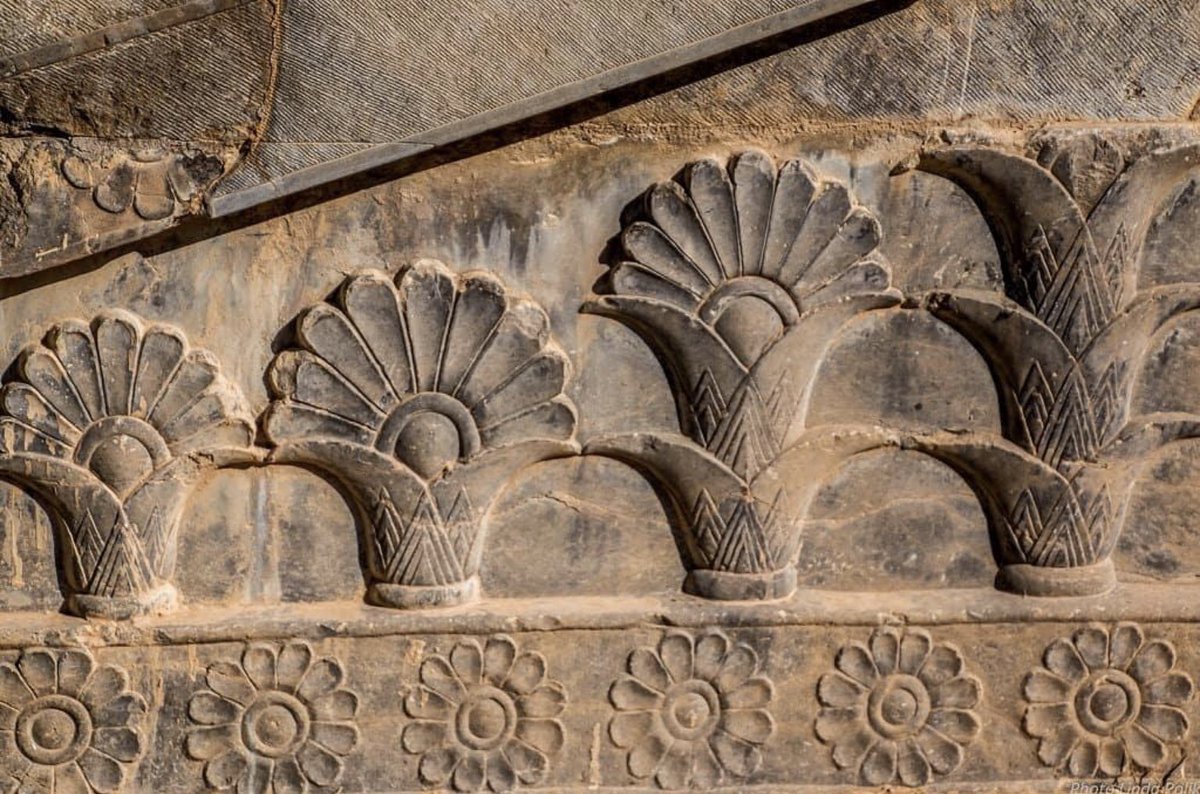
Lotus flower in Persepolis, Iran
Conclusion: The Legacy of Symbols in Iranian Jewelry
The use of historical and spiritual symbols in Iranian jewelry is more than just a decorative tradition. It reflects the country’s deep-rooted beliefs, its respect for history, and its connection to spirituality and nature. Each piece of traditional jewelry tells a story, carrying with it meanings of protection, power, love, and wisdom.
At LetsGoYelo, we celebrate these rich traditions through our unique collection of handcrafted Iranian jewelry, where every piece embodies the legacy of centuries-old craftsmanship and symbolic heritage. Discover the beauty and meaning behind each design, and connect with the profound history of Persian jewelry.
